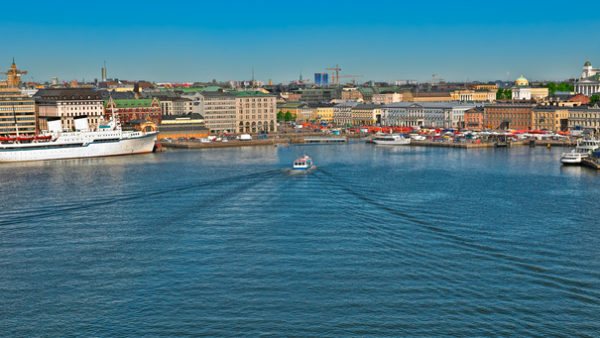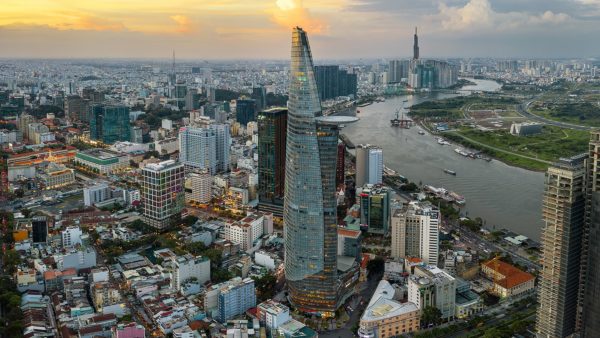Singapore is the most attractive market in the world for infrastructure investment thanks to its strong business environment, healthy pipeline of development work and growing economy, while Qatar and UAE took spots number two and three, according to a recent analysis.
These countries and seven others are the top ten sweet spots for investors, including pension funds and banks, according to global design and consultancy firm, Arcadis.
Last month the firm released its second Global Infrastructure Investment Index, which ranks 41 countries by their attractiveness to investors in infrastructure.Â
For each country the study looked at various issues including the ease of doing business in each market, tax rates, risk of corruption, clarity of government policy, and the availability of debt finance. Arcadis combined these and other factors to gauge the risk profile for each market and how attractive each one is likely to be to potential investors.
Here are the top ten most attractive countries for infrastructure investment in 2014, with the difference from their 2012 ranking in brackets:Â
- Singapore (=)Â
- Qatar (=)Â
- UAE (+1)Â
- Canada (-1)Â
- Sweden (=)Â
- Norway (=)Â
- Malaysia (=)Â
- USA (+3)Â
- Australia (-1)Â
- UK (+3)
Rob Mooren, global infrastructure director at Arcadis, said the growing scarcity of traditional financing means that governments should find ways of attracting private finance for their infrastructure schemes.Â
"Many governments are struggling to finance infrastructure investments. As traditional debt markets are now harder to access, governments need to find alternative finance and agree to progressing projects. By encouraging private finance into infrastructure, governments can remain globally competitive and meet their social and economic objectives."
Will Singapore rule for long?
Singapore has an admirably integrated approach to infrastructure planning, which links big schemes to overarching business and social requirements. This has helped it to retain its top position. But the government also finances most major projects itself, leaving investors to fight for scraps. That’s why other countries with major investment plans such as Qatar and the UAE, not to mention emerging Asian markets such as Malaysia and the Philippines, are beginning to grow in appeal. The study leaves open the question of whether Singapore’s dominance of the league will last.
The USA and the UK entered the top 10 for the first time through improvements in their economies as well as the growing need for investment in infrastructure. However, Arcadis believes that both countries must work hard to attract private investment funds, as they compete against countries that provide more clarity on government infrastructure policy and are able to act on their promises to delivery major projects.
Continental European countries present a mixed picture. Low risk markets like Sweden and Norway remain stable at fifth and sixth place, largely because each has a highly efficient business environment with transparency in regulation and efficient legal systems. Other European countries such as Holland, France and Italy are either lacking public finance needed to upgrade their ageing infrastructure or have a lack of commitment from their governments to deliver proposed projects, Arcadis says. They have therefore slipped down the rankings.
Chile is the highest placed Latin America country, at 13th position, but its potential is limited by its size. In 2013 its construction market was estimated to be worth $41.8bn but this is highly concentrated in mining. Brazil is placed nearer the bottom of the ranking in 32nd place, indicating that some of the difficulties experienced with delayed programs have the potential to be risky for investors.
Overall, investors like joined-up thinking, the report said.
"A key difference that we have seen in the Asian and Middle Eastern markets is that those countries that have a clear integrated strategy tying infrastructure development plans to business and economic objectives have higher rankings," Rob Mooren said. "This gives long term clarity to investors and is something that developed markets would do well to copy if they are to succeed in attracting more private finance into infrastructure."
The report also explored the factors that governments, infrastructure owners and operators need to consider in order to attract private finance. It suggested the structuring of infrastructure projects is key to this. For example, in project finance, mature markets like Canada, Australia, the US and the UK have sponsors that understand the pricing of assets, are aware of the rates of return expected and appreciate the key risks involved, making it easier to attract infrastructure investment. These markets have experienced the early challenges of introducing PPP and PFI and have learned what to expect from both an investor and political perspective.
Download the report here
Photograph: The Dover MRT station, Singapore (Chensiyuan/Wikimedia Commons)










